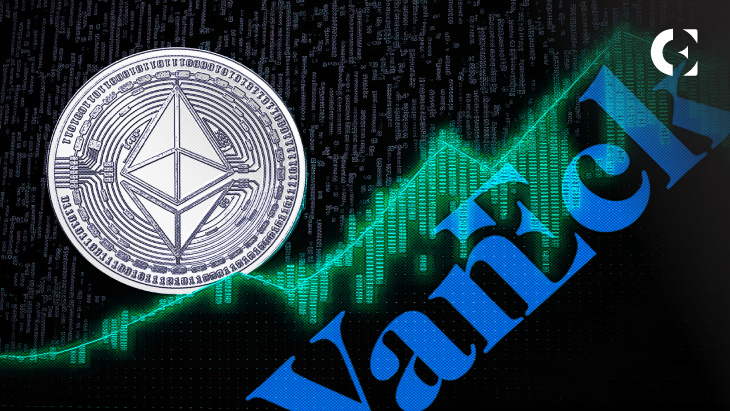- VanEck sees ETH’s hard fork as a game-changer, positioning it as a rival to U.S. T-bills.
- The firm projects Ethereum’s network revenues to surge from $2.6B to $51B by 2030.
- It implies ETH value potentially will shoot up to $11.8k.
A recent document released by VanEck, a prominent exchange-traded fund (ETF) manager, stressed Ethereum (ETH)’s potential as a significant competitor to the U.S. Treasury bills, with ETH’s price potentially exceeding $10k in coming years.
Following the recent successful hard fork on the Ethereum blockchain, the firm updated its valuation model for Ethereum, projecting substantial growth and estimating a token price of nearly ten times ETH’s current value in seven years.
The document outlined VanEck’s comprehensive valuation methodology, incorporating transaction fees, miner extractable value (MEV), and “Security as a Service.”
VanEck’s analysis predicts a significant rise in Ethereum network revenues, projecting an increase from the current annual rate of $2.6 billion to a staggering $51 billion by 2030. Based on the assumption that Ethereum secures a 70% market share among smart contract protocols, the firm predicted a token price of $11.8k by 2030.
To arrive at the present valuation, VanEck utilized a rigorous valuation model. It estimated cash flows for the year ending on April 30, 2030, factoring in Ethereum revenues and deducting a global tax rate and validator revenue cut.
Applying multiple estimates, it utilized a long-term cash flow yield of 7% minus a long-term crypto growth rate of 4%. By dividing the fully diluted valuation in 2030 by the expected number of tokens in circulation and discounting the result by 12% to April 20, 2023, VanEck arrived at $5.3k for ETH.
The firm’s assessment of Ethereum’s potential growth and positioning as a formidable competitor to traditional financial instruments reflects the evolving landscape of crypto. However, it is essential to note that crypto valuations are subject to market volatility and other factors that may impact their performance.











